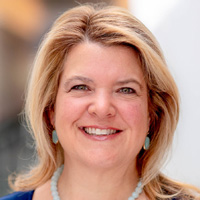Tax-Efficient Tips for 2021’s Charitable Giving Season
With only a few weeks left in the year, giving season is upon us. To make the most of your gift, consider one of these tax-smart strategies.


Spurred in part by the pandemic, a record $471 billion was donated to U.S. charities in 2020, according to Giving USA. I expect that trend to continue this year, as individuals, couples and families are inspired, perhaps more so than years prior, to make an impact on their communities and the causes they care about.
For those planning to contribute to charitable organizations this year, consider these strategies to make the most tax-efficient donation.
A check may not be the smartest gift
A common mistake I often see novice donors make is their preference to cut a check to a charity, assuming it’s the simplest and most effective route. Given the stock market’s solid 10-year run, donors may want to instead consider gifting appreciated securities, or concentrated positions if they are seeking to trim portfolio holdings.
From just $107.88 $24.99 for Kiplinger Personal Finance
Become a smarter, better informed investor. Subscribe from just $107.88 $24.99, plus get up to 4 Special Issues

Sign up for Kiplinger’s Free Newsletters
Profit and prosper with the best of expert advice on investing, taxes, retirement, personal finance and more - straight to your e-mail.
Profit and prosper with the best of expert advice - straight to your e-mail.
When an individual donates, for example, $5,000 in appreciated securities, versus $5,000 in cash, they reap a handful of benefits. Not only does this rebalance their portfolio, but it provides a tax deduction incentive – the donation can reduce taxable income, but only if the recipient organization qualifies (use this IRS tool to search all tax-exempt charities). Additionally, the donation allows the donor to avoid paying capital gains tax on the security. The charity also avoids taxes when they sell the donated investment.
For some novice philanthropists, it’s tempting to gift cash, however, gifting securities can be the far more strategic and tax-efficient approach for the donor, and encourage further giving to benefit charitable organizations.
Expanding a charitable footprint
According to the Giving USA report, donations to education, human services and environmental and animal organizations were estimated to have the highest increases in 2020. For my clients who are interested in expanding their giving – whether increasing the amount they give or opting to donate to multiple causes – I’ve recommended they use the Nonprofit Aid Visualizer (NAVI), powered by Vanguard Charitable. This tool pinpoints charities most impacted by the pandemic, giving individuals a clear picture of the giving landscape and organizations most in need.
For an experienced philanthropist who may be inspired to donate more this year than in previous years, they may consider “stacking” a donation. This allows the ability to deduct up to 30% of a donor’s adjusted gross income (AGI) by gifting appreciated securities, and then another 30% in cash (or another 20% in cash if donating to a donor advised fund), providing a tax deduction on both the securities and cash gifts. While the advantage of stacking allows a donor to utilize appreciated securities, it is worth noting that for the extremely philanthropic, the CARES Act and Coronavirus Stimulus Act increased the ability to deduct up to 100% of a donor’s AGI if contributing cash to an operating charity this year.
Aside from stacking, another strategy for a seasoned donor is gifting securities through a donor advised fund (DAF), a charitable giving account that allows a donor to invest, grow and give assets.
If a donor is planning to give to multiple charities this year, but doesn’t exactly know what causes to contribute to, a DAF is a good parking spot. The donor can take the immediate tax deduction once the DAF is funded, and decide which charities receive the funds at a future date. Additionally, a DAF enables a donor to piecemeal their donations out. For example, with $25,000 in the DAF, that amount can be gifted in full to one charity or separated to five charities receiving $5,000 each — and the donations can be made over the course of several years.
Age-specific considerations
Aside from philanthropic experience, there are also tax-efficient charitable giving strategies tied to a donor’s age. A qualified charitable distribution (QCD) is a great way to gift dollars to charity for donors who are at least 70½ (Question: Just want to make sure this shouldn’t be 72. Answer is YES.) at the time of the distribution. This strategy allows a donor to utilize dollars from their IRA to donate directly to a qualified organization. For those in a high tax bracket, this can be a tax-efficient way to spend down an IRA while avoiding ordinary income taxes – which would otherwise be due on distributions – since the dollars are being donated. Additionally, annual required minimum distributions (RMDs) can be donated to a qualified charity (up to $100,000), which can minimize the RMD’s tax consequences.
2021 could be another robust year for charitable giving, as donors remain inspired to help their local communities and causes in need of resources due to the continued pandemic impact. With only a few weeks left in the year, donors of all wealth levels and philanthropic experience should think through the different gifting tactics available to them to maximize the tax-efficiency of their donations for both themselves and their recipient organizations.
Profit and prosper with the best of Kiplinger's advice on investing, taxes, retirement, personal finance and much more. Delivered daily. Enter your email in the box and click Sign Me Up.

Julie Virta, CFP®, CFA, CTFA is a senior financial adviser with Vanguard Personal Advisor Services. She specializes in creating customized investment and financial planning solutions for her clients and is particularly well-versed on comprehensive wealth management and legacy planning for multi-generational families. A Boston College graduate, Virta has over 25 years of industry experience and is a member of the CFA Society of Philadelphia and Boston College Alumni Association.
-
 JPMorgan's Drop Drags on the Dow: Stock Market Today
JPMorgan's Drop Drags on the Dow: Stock Market TodaySmall-cap stocks outperformed Tuesday on expectations that the Fed will cut interest rates on Wednesday.
-
 Why Playing It Safe in Retirement Is a Big Risk
Why Playing It Safe in Retirement Is a Big RiskFear of losing money could actually cost you in retirement. Find out why being too conservative with your life savings can hurt you and how to stop that from happening.
-
 Tax Refund Alert: House GOP Predicts 'Average' $1,000 Payouts in 2026
Tax Refund Alert: House GOP Predicts 'Average' $1,000 Payouts in 2026Tax Refunds Here's how the IRS tax refund outlook for 2026 is changing and what steps you can take now to prepare.
-
 Meet the World's Unluckiest — Not to Mention Entitled — Porch Pirate
Meet the World's Unluckiest — Not to Mention Entitled — Porch PirateThis teen swiped a booby-trapped package that showered him with glitter, and then he hurt his wrist while fleeing. This is why no lawyer will represent him.
-
 Smart Business: How Community Engagement Can Help Fuel Growth
Smart Business: How Community Engagement Can Help Fuel GrowthAs a financial professional, you can strengthen your brand while making a difference in your community. See how these pros turned community spirit into growth.
-
 In 2026, the Human Touch Will Be the Differentiator for Financial Advisers
In 2026, the Human Touch Will Be the Differentiator for Financial AdvisersAdvisers who leverage innovative technology to streamline tasks and combat a talent shortage can then prioritize the irreplaceable human touch and empathy.
-
 How Financial Advisers Can Deliver a True Family Office Experience
How Financial Advisers Can Deliver a True Family Office ExperienceThe family office model is no longer just for the ultra-wealthy. Advisory firms will need to ensure they have the talent and the tech to serve their clients.
-
 Why Investors Shouldn't Romanticize Bitcoin, From a Financial Planner
Why Investors Shouldn't Romanticize Bitcoin, From a Financial PlannerInvestors should treat bitcoin as the high-risk asset it is. A look at the data indicates a small portfolio allocation for most investors would be the safest.
-
 I'm a Financial Pro Focused on Federal Benefits: These Are the 2 Questions I Answer a Lot
I'm a Financial Pro Focused on Federal Benefits: These Are the 2 Questions I Answer a LotMany federal employees ask about rolling a TSP into an IRA and parsing options for survivor benefits, both especially critical topics.
-
 Private Credit Can Be a Resilient Income Strategy for a Volatile Market: A Guide for Financial Advisers
Private Credit Can Be a Resilient Income Strategy for a Volatile Market: A Guide for Financial AdvisersAdvisers are increasingly turning to private credit such as asset-based and real estate lending for elevated yields and protection backed by tangible assets.
-
 5 RMD Mistakes That Could Cost You Big-Time: Even Seasoned Retirees Slip Up
5 RMD Mistakes That Could Cost You Big-Time: Even Seasoned Retirees Slip UpThe five biggest RMD mistakes retirees make show that tax-smart retirement planning should start well before you hit the age your first RMD is due.